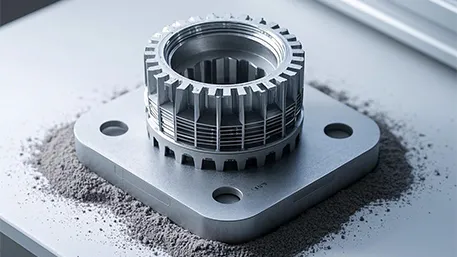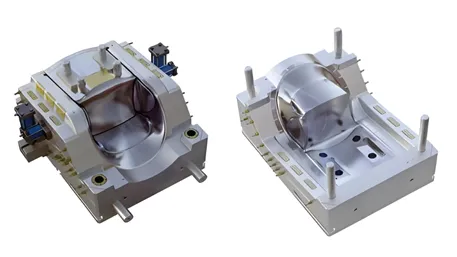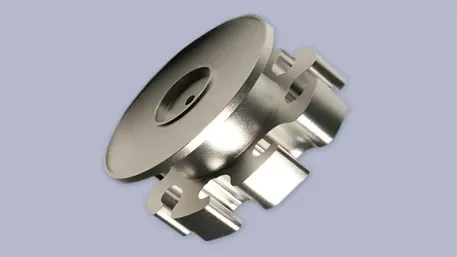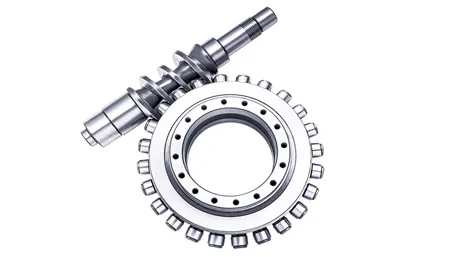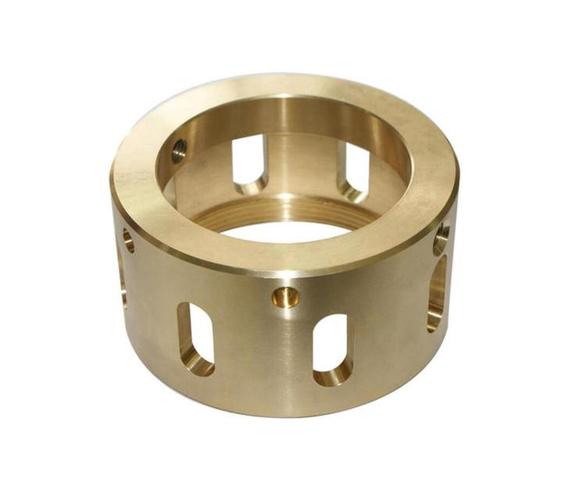In fields such as heavy – duty transportation and engineering operations, the performance of trucks is directly related to transportation efficiency and operational safety. Customized truck components achieve a leap from “general adaptation” to “scenario – based high – performance” through data – driven precise design, high – strength manufacturing processes, and intelligent function integration.
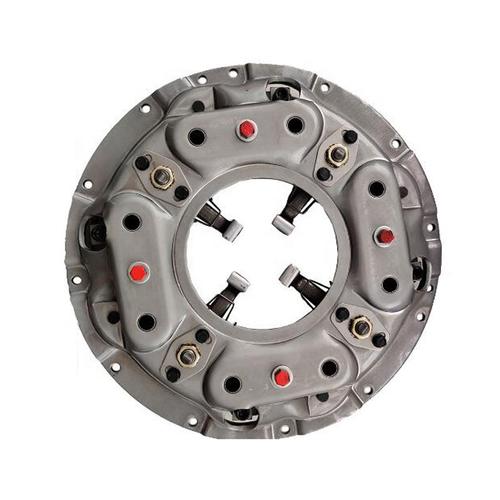
I. Why are Standardized Truck Components Difficult to Meet the Needs of Complex Working Conditions?
Q&A: What are the Core Advantages of Customized Truck Components?
Standardized truck components adopt unified specifications and mass – production processes, with three core pain points:
Q&A: What are the Core Advantages of Customized Truck Components?
Standardized truck components adopt unified specifications and mass – production processes, with three core pain points:
- Poor adaptability to working conditions: The fixed structural design and material selection cannot meet the complex requirements of different load – capacities (10 – 100 tons) and road conditions (muddy, bumpy, high – temperature desert). For example, the suspension system is prone to fatigue damage under heavy loads, and the braking components experience significant thermal fade during frequent braking.
- Insufficient functional expandability: Lack of intelligent monitoring, rapid maintenance, and other functions, making it difficult to real – time monitor the wear status of components. The troubleshooting time is long, resulting in a 15% – 20% increase in vehicle downtime.
- Imbalance between lightweight and strength: Ordinary steel is mostly used, resulting in heavy components, an 8% – 12% increase in fuel consumption, and insufficient or excessive strength redundancy in key parts (such as the frame and axle), affecting overall performance and economy.
However, customized truck components focus on “full – working – condition performance optimization”:
- In – depth scenario – based adaptation:
- Heavy – duty transportation: For mining and logistics transportation, customized high – strength frames (tensile strength ≥ 1100MPa) and strengthened axles (load – bearing capacity increased by 30%) are provided to ensure the structural safety and reliability under long – term heavy loads.
- Extreme – environment operations: Components resistant to low temperatures (- 50℃) or high temperatures (80℃) are designed for operations in polar regions and high – temperature deserts. For example, sealing parts made of special rubber materials and an engine cooling system with a 40% improvement in heat – dissipation performance are used.
- Data – driven precise design: Combining truck operation data (such as mileage, load – capacity curves, and road – condition distribution), the structural parameters of components are optimized. For example, by adjusting the number, thickness, and arc of leaf springs, the comfort of the suspension system is increased by 25%, reducing the risk of cargo damage due to bump.
II. How do the Core Processes of Customized Truck Components Achieve Performance Breakthroughs?
- Digital design and simulation optimization
- Multi – physical – field coupling simulation: Using software such as ANSYS and Abaqus to simulate the performance of truck components under the action of dynamic loads, vibrations, and temperature changes in multiple physical fields, optimizing the structural design, reducing material redundancy by 20% – 25%, and at the same time increasing the strength of key parts by 18%.
- Parametric design: Parametric models of components such as frames, axles, and suspensions are established. Dimensions (such as the height and thickness of frame longitudinal beams) and material grades (Q345, Q690, etc.) can be quickly adjusted according to different working – condition requirements, shortening the design cycle by 40%.
- Virtual verification technology: Virtual assembly and performance testing are carried out through digital twin models to discover interference problems and design defects in advance, reducing the number of physical prototypes and lowering the R & D cost by 35%.
- Advanced manufacturing processes: The ultimate pursuit from materials to finished products
- High – strength material processing:
- Laser welding: Using high – power fiber lasers (power 5 – 10kW) to weld high – strength steel plates, the weld strength reaches 98% of the base material, with a small heat – affected zone, and the deformation is controlled within ±1mm, which is suitable for the manufacture of large components such as frames and cargo boxes.
- Hot – forming process: Heating boron steel to 850 – 950℃, then rapidly stamping and quenching to increase the strength of components to more than 1500MPa, which is applied to safety – critical components such as anti – collision beams and cab frames.
- Precision machining:
- Five – axis machining: Five – axis milling is carried out on components such as axles and steering knuckles. The key hole diameter accuracy reaches IT6 level (±0.015mm), and the surface roughness Ra ≤ 0.8μm, ensuring assembly accuracy and mating performance.
- CNC bending: Using a high – precision CNC bending machine (angle accuracy ±0.5°) to process complex – shaped sheet metal parts such as fuel tanks and protective covers, ensuring dimensional consistency and appearance quality.
- Surface treatment technology:
- Powder coating: Through the electrostatic powder coating process, a coating 80 – 120μm thick is formed on the surface of components, with a salt – spray resistance time of more than 1000 hours, significantly improving corrosion resistance.
- Dacromet treatment: Dacromet coating (film thickness 6 – 8μm) is applied to chassis components, which has excellent corrosion resistance and wear resistance and is suitable for components exposed to harsh environments for a long time.
- High – strength material processing:
- Intelligent function integration and data closed – loop
- Integration of intelligent monitoring modules:
- Sensor embedding: Pressure, temperature, and vibration sensors are embedded in components such as axles, tires, and braking systems to collect data in real – time (sampling frequency 100Hz) and monitor the operating status of components.
- Fault early – warning system: Analyzing sensor data through edge computing and AI algorithms to predict potential faults (such as bearing wear and brake – pad overheating) 72 hours in advance and pushing maintenance suggestions to the driver’s terminal.
- Production execution control: Real – time collection of more than 50 parameters such as welding current, bending angle, and machining dimensions. AI algorithms automatically compensate for process deviations, and the yield rate is increased from 80% to 96%.
- Detection and calibration: Using a 3D laser scanner (accuracy ±0.05mm) to detect component dimensions, and simulating 1 million cycles of loading tests through a fatigue testing machine to ensure that components meet the design life requirements. The data is uploaded to the MES system to form a digital twin file.
- Integration of intelligent monitoring modules:
III. Functional Innovation: How do Customized Truck Components Improve Operational Efficiency?
- Intelligent maintenance and management system
- Predictive maintenance: Based on component operation data and historical fault models, predicting the maintenance cycle (error < 5%), such as automatically reminding tire replacement and lubricant addition, reducing unplanned downtime by 30%.
- Remote diagnosis: Uploading vehicle fault codes to the cloud through 4G/5G networks, and engineers remotely analyzing and guiding repairs, shortening the troubleshooting time by 50%.
- Energy – saving and safety optimization
- Lightweight design: Using aluminum alloy and carbon – fiber composite materials to manufacture components such as cargo boxes and wheels, reducing the weight by 20% – 30% and fuel consumption by 8% – 10%.
- Active safety functions: Integrating modules such as electronic stability control systems (ESC) and automatic emergency braking (AEB), achieving precise response through customized sensors and controllers, and reducing the accident rate by 40%.
IV. Quality Control: Stringent Verification throughout the Chain from Materials to Finished Products
- Multi – dimensional performance testing system
- Material – level screening:
- Steel: Testing chemical composition (contents of elements such as C, Si, and Mn) and mechanical properties (yield strength, impact toughness) to ensure compliance with standards such as GB/T 1591.
- Rubber: Conducting hardness tests (Shore A 60 – 80) and aging tests (70℃×168h) to verify elasticity and durability.
- Finished – product – level testing:
- Mechanical performance testing: Conducting static and dynamic load tests on frames and axles, with no permanent deformation under 3 times the rated load; conducting fatigue life tests on the suspension system (no fracture after 1 million cycles).
- Environmental adaptability testing: Testing components in high – and low – temperature (- 40℃ to 80℃), humid (95% RH), and salt – spray (5% NaCl solution) environments to ensure normal functionality, with no corrosion or deformation.
- Sealing performance testing: Conducting air – tightness tests on components such as fuel tanks and air reservoirs, holding pressure at 0.8MPa for 30 minutes with a leakage rate of < 5ml/min.
- Material – level screening:
- Intelligent defect prevention technology
- First – piece thirteen – inspection system: The engineering team verifies 45 indicators such as material batches, process parameters, and key dimensions to intercept potential defects.
- AI visual full – inspection: A linear – array camera completes the surface scanning of components in 0.3 seconds. A deep – learning algorithm identifies welding defects (such as pores with a diameter > 1mm) and dimensional deviations (> ±0.2mm), with a missed – detection rate of < 0.003%.
V. How does Small – batch Customization Balance Efficiency and Cost?
Q&A: Does High – precision Customization Mean High Cost?
Through three process innovations, the customization cycle is shortened by 45% and the cost is reduced by 30%:
Q&A: Does High – precision Customization Mean High Cost?
Through three process innovations, the customization cycle is shortened by 45% and the cost is reduced by 30%:
- Modular design library: Establishing more than 20 standardized modules such as frame longitudinal beams, suspension brackets, and braking modules, with a reuse rate of 80%, reducing the development cost by 45%.
- Flexible production line: The robot automatic welding system is equipped with quick – change tooling (change – over time < 10 minutes) to achieve multi – variety and small – batch (50 – 500 pieces) production, and the equipment utilization rate is increased to 90%.
- Digital – twin – driven production: Creating a digital twin for each customized component, real – time monitoring of production processes and quality data, optimizing process parameters, and reducing the scrap rate by 22%.
VI. Core Considerations for Choosing Customized Truck Components
- Data collection and analysis capabilities: The supplier should have a truck operation data analysis platform and professional simulation software to ensure that the customization plan is based on accurate working – condition data.
- Technical complexity: It should cover all – process capabilities such as high – strength material processing, intelligent sensor integration, and complex structure design to meet the needs of different scenarios.
- Certification and compliance: Provide quality certifications such as ISO 9001 and IATF 16949, as well as test reports compliant with national regulations such as GB 7258.
Conclusion
The value of customized truck components lies in defining “full – working – condition performance standards” with data and achieving “efficient operation and safety guarantee” with processes. In the trend of the development of logistics transportation and engineering operations towards intelligence and high – efficiency, customized solutions with “data – driven design + advanced manufacturing processes” are becoming the core force to improve the operational efficiency and reliability of trucks. From reliable load – bearing during long – distance heavy – duty transportation to stable operations in extreme environments, customized truck components will escort every transportation and operation with “millimeter – level precision” and “intelligent functions”.
(Contact us immediately to obtain a customized truck component solution and a free working – condition analysis service)
The value of customized truck components lies in defining “full – working – condition performance standards” with data and achieving “efficient operation and safety guarantee” with processes. In the trend of the development of logistics transportation and engineering operations towards intelligence and high – efficiency, customized solutions with “data – driven design + advanced manufacturing processes” are becoming the core force to improve the operational efficiency and reliability of trucks. From reliable load – bearing during long – distance heavy – duty transportation to stable operations in extreme environments, customized truck components will escort every transportation and operation with “millimeter – level precision” and “intelligent functions”.
(Contact us immediately to obtain a customized truck component solution and a free working – condition analysis service)

